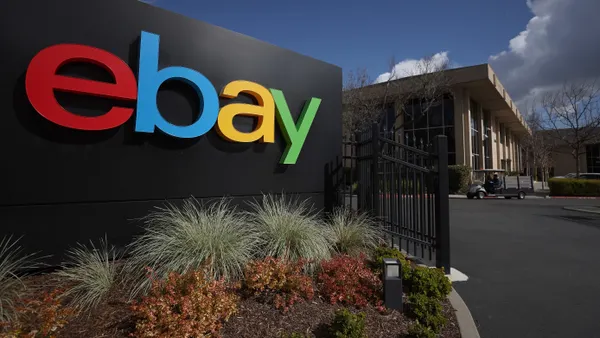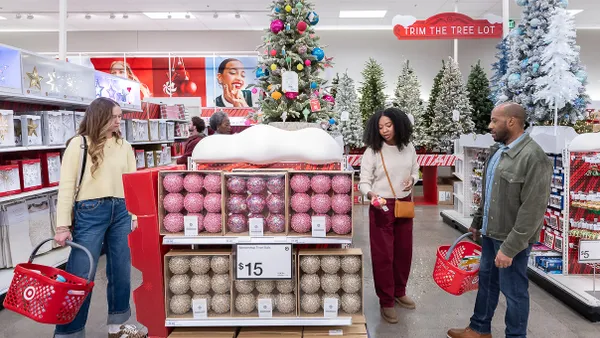The irony of retail is that the trends that generate the most conversation don’t always translate to sales. Consumers will always obsess over never-before-seen, unheard-of products and experiences, but that doesn’t mean they’ll put their money down on the latest craze. Inundated with buzzwords and catchy headlines, it can be extremely difficult for retailers to understand what consumers want and what’s just hype.
To uncover the truth behind what really drives purchases for today’s shoppers, Productsup recently released “The commerce shortfall” report. The report is based on a survey of nearly 5,700 global consumers and focuses on consumer expectations for some of retail’s buzziest buzzwords of all: sustainable shopping and the metaverse.
So what’s actually worth paying attention to when it comes to these “hot” topics?
“Sustainable shopping”
The notions of “buying local” and “buying green” have become wildly popular in the past few years. Brands like Patagonia and TOMS were ahead of this trend, using recycled materials in their products and offering incentives for sustainable purchases to lower their environmental impact. But are sustainability initiatives worth the investment for the average brand or retailer? And if so, which initiatives do consumers care about most?
In short, yes – people want to be conscious consumers. The data shows people are more likely to make a purchase if a product is reusable (71%) or recyclable (70%). But being a conscious consumer doesn’t come easy. One of the biggest obstacles consumers have with sustainable shopping is the information gap – 34% of consumers say it’s difficult to find a product’s reusability, while 30% have difficulty finding its recyclability.
Lacking this level of detail in product information leads consumers to become skeptical of a retailer’s authenticity. For instance, when asked about what builds trust in a brand’s ethical and sustainable practices, consumers ranked initiatives that can be seen as “cause-washing” – like partnering with global NGOs (26%) and generating positive press (22%) – as the least influential. Instead, providing further explanation of what makes a product organic, free-range, or eco-friendly is the leading way to boost consumer trust in ethical brands and products (43%).
So when it comes to sustainable shopping, it’s all in the details. Retailers should take this trend seriously because in the end, the items that get added to shopping carts are the ones that consumers can easily identify as ethical purchases.
“The metaverse”
Following Facebook’s rebranding to Meta last year, everyone’s attention has turned to the metaverse and what the future holds for virtual shopping. Some brands are already betting big on the metaverse – Nike just launched its first digital shoe collection, Crate and Barrel appointed an SVP of the Metaverse, and Gucci opened its own digital “plaza” for shopping and interacting. These investments signal that retailers are committed to entering the metaverse, but are consumers ready for Meta jogs and virtual fashion?
According to Productsup’s report, 60% of consumers aren’t interested in buying virtual-only goods. We’re seeing this reflected in declining NFT sales, as people are struggling to find the utility in owning digital assets.
Does that mean the metaverse is a bust? Not at all. The research shows there’s still huge potential for virtual sales. Almost half (46%) of consumers said that experiencing life-like features virtually, such as seeing a digital painting in their home using augmented reality glasses, would entice them to make a purchase in the metaverse. Digital assets with real world applications hold much more value in consumers’ eyes.
Considering the metaverse is still an abstract concept for most, there’s still a lot of misunderstanding and confusion about what it is and what it has to offer. For instance, 27% of consumers don’t think shopping in the metaverse will offer a different experience from shopping in the physical world. But with promises of hyper-speed internet and unlimited space for innovation, it’s clear the metaverse will be like nothing anyone has ever seen before.
So while there might not be an overwhelming interest in the digital assets that are currently available on the market, this is a space that is evolving quickly. As more brands and retailers experiment with virtual products and experiences, the industry will eventually discover how to draw people into the metaverse. A couple of years from now, the most competitive companies in the market will be the ones that took the metaverse seriously in these early adoption days.
To learn more about what today’s consumers really want from retailers, including the differences across countries and age groups, download Productsup’s report, “The commerce shortfall”.
The study’s findings can help retailers understand consumers’ ever-changing preferences and behavior – but that’s only step one. Retailers need to be agile enough to deliver the experiences consumers want now and in the future. For example, having full control over their commerce operations with a product-to-consumer (P2C) strategy allows them to adapt to these trends, such as having the ability to easily add recyclability information to product listings to meet expectations for sustainable shopping.










